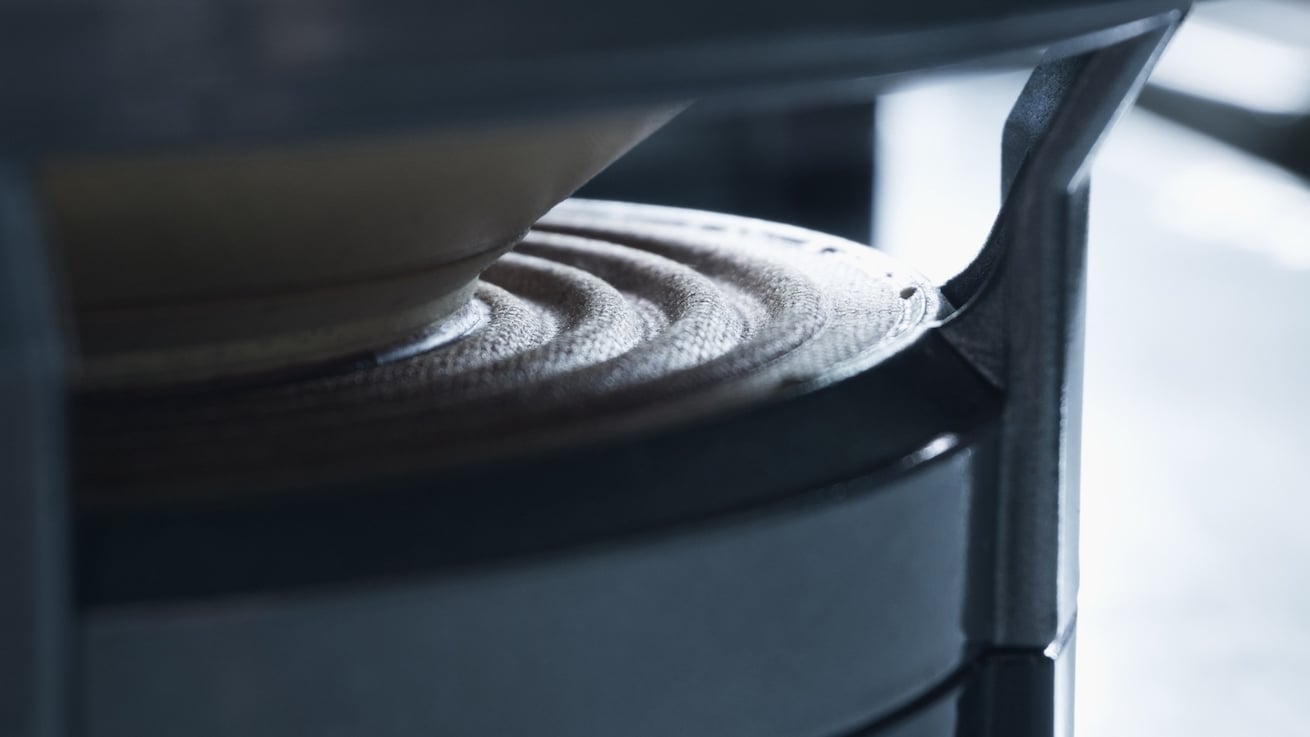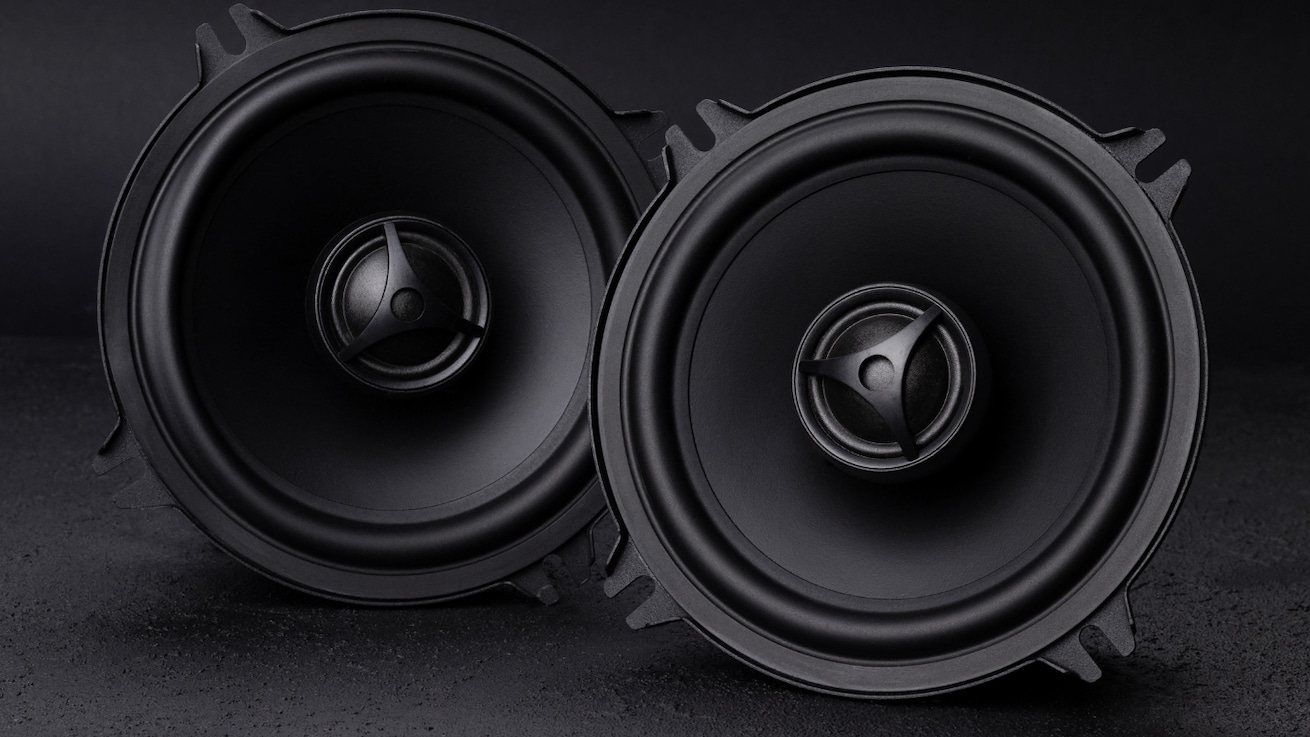What Does RMS Mean for Speakers? How To Achieve Better Sound
What does RMS mean for speakers? RMS, which stands for Root Mean Squared is a measurement used to determine the power output of speakers. It indicates the power that a speaker can handle without distorting the signal. Essentially it helps determine how powerful and capable speakers are in delivering distortion free sound.
Understanding the RMS value of speakers is crucial when selecting equipment for setups or music enthusiasts. When it comes to equipment it’s important to understand terms like RMS power, wattage, peak power and power rating.
In this article we will explore the concept of RMS power and its importance for speakers. Whether you’re buying car speakers or home speakers knowing the RMS value is vital to ensure performance and sound quality.
Understanding RMS Power
 Comprehending RMS power is essential, for anyone seeking to assess the power levels of a system. It refers to the measure of power output that a device can deliver. RMS power is a measure of the delivery of power, without distortion or harm in a device.
Comprehending RMS power is essential, for anyone seeking to assess the power levels of a system. It refers to the measure of power output that a device can deliver. RMS power is a measure of the delivery of power, without distortion or harm in a device.
Simply put higher RMS power indicates that a system can produce clearer audio at volumes. Understanding RMS power helps in making decisions when selecting audio equipment and ensuring that the power levels of the system meet ones needs.
So what does RMS stand for?
RMS stands for Root Mean Square. It is a term used to calculate the power of an electrical signal. In relation to speakers RMS power refers to the amount of power a speaker can handle without causing any damage or distortion.
What does RMS Power mean for speakers?
RMS power represents the output that speakers can handle without overheating or sustaining damage. It’s a specification to consider when choosing speakers as it directly impacts quality and durability.
How is RMS Power measured?
RMS power is measured in watts, which indicates how much power a speaker can handle or produce. It’s essential to match the speakers RMS power rating, with the amplifiers RMS output to avoid overpowering or underpowering the speakers.
What is the Meaning of RMS Rating?
In car audio the RMS rating refers to the measurement of power output that an amplifier can deliver to a set of speakers. This rating, known as “root mean square ” is typically expressed in watts. The RMS value indicates the power that an amplifier can consistently provide without causing distortion or harm, to the speakers.
The RMS rating holds importance as it reflects the reliability and quality of the audio system. By selecting an amplifier with a RMS rating you can ensure an clearer sound output, particularly during high volume or dynamic audio playback.
Distinguishing Between RMS and Peak Power
 The distinction, between RMS (Root Mean Square) and peak power lies in how they measure and represent signals. The RMS power measures the power of an AC (Alternating signal and is often regarded as its “true” power.
The distinction, between RMS (Root Mean Square) and peak power lies in how they measure and represent signals. The RMS power measures the power of an AC (Alternating signal and is often regarded as its “true” power.
It is calculated by taking the root of the value of squared instantaneous power values. Conversely peak power represents the amplitude of a signal. Denotes its highest achievable power level.
RMS power is valuable when determining the power output and the actual strength of a signal while peak power is useful, in understanding the capability or highest level a signal can handle. Both RMS and peak power are crucial for analyzing signals.
What does Peak Power mean?
Peak power, also known as power refers to the amount of power that a speaker can handle for brief periods. It tends to be higher than the RMS power rating. Helps determine a speakers ability to handle increases in power.
RMS Value versus Peak Power Output
The key distinction between RMS and peak power lies in their durations; RMS measures power, while peak power represents the amount of power a speaker can handle briefly. The power rating offers an representation of a speakers capacity to handle and perform with sustained levels of energy.
Why is RMS Power More Important for Speakers?
RMS power holds significance, for speakers because it reflects their ability to endure levels of power without distortion or damage. While peak power comes into play during bursts it does not provide an indication of how well a speaker can consistently handle energy over time.
When you have the correct RMS peak power rating it means that your speakers are capable of handling power from an audio signal without compromising on the sound quality. This becomes crucial in ensuring that the speakers can handle both low peaks of music without any damage or distortion.
Therefore having a higher RMS power allows for a accurate representation of the average value of an audio signal resulting in an enhanced listening experience.
How Does RMS Power Affect Speakers?
 The impact of RMS power, on car speakers performance is quite significant. By selecting car speakers with a matching RMS power rating you ensure that they can handle the output power from your cars audio system without getting damaged or distorted. This proper matching not enhances quality but also prevents premature wear and tear of your precious speakers.
The impact of RMS power, on car speakers performance is quite significant. By selecting car speakers with a matching RMS power rating you ensure that they can handle the output power from your cars audio system without getting damaged or distorted. This proper matching not enhances quality but also prevents premature wear and tear of your precious speakers.
What Happens if You Exceed the Power Rating of a Speaker? Exceeding the recommended RMS power rating of a speaker can have consequences. If you overpower the speakers it can lead to issues, like distortion clipping and potentially damage the voice coil of the speaker. Moreover it may cause overheating. Result in reduced clarity and overall quality.
How to Select the Appropriate RMS Power for Speakers?
When choosing the RMS power for your speakers it is essential to consider factors. Firstly ensure that both your loudspeaker and amplifier are compatible and capable of handling the amount of watts RMS to prevent any damage.
Additionally take into account the power requirements based on your intended usage. If you plan to use the speakers in venues or outdoor events a higher RMS power rating might be necessary.
Other factors that should be considered include speaker sensitivity, desired volume levels and the type of music or audio being played. By evaluating these aspects you can choose a RMS power for your speakers.
Understanding Speaker Power Ratings
How much power rating is too much power? Having an understanding of speaker power ratings is vital, in achieving high quality output. Power ratings indicate the amount of power that a subwoofer can handle without experiencing distortion or damage.
The peak value represents the power capacity that a speaker can sustain during bursts. Selecting a speaker with a power rating that aligns with the amplifiers output power is essential to avoid any issues of overpowering or underpowering.
Overpowering can cause damage, to the speaker while underpowering may result in subpar quality. Understanding power ratings helps ensure that your speakers can deliver performance and produce an crisp sound.
What does Power Handling mean?
Power handling refers to how a speaker can handle and distribute power from an amplifier. It indicates the speakers capability to handle peak power without overheating or distorting the audio.
How do you Calculate RMS Power for Speakers?
Calculating the RMS power for speakers involves determining the power output sustained by the speaker. This information is usually provided in RMS watts. Can be found in the specifications or documentation of the speaker.
Matching the power rating of your speaker with the amplifiers RMS output ensures an suitable setup for achieving sound reproduction.
Choosing the Appropriate Wattage for Your Speakers
Selecting the wattage for your speakers is crucial to achieving audio quality and preventing any potential damage, to your equipment. To determine a wattage it is important to consider your speakers power handling capability, which is typically indicated by their wattage rating.
The speakers power rating indicates the amount of power they can handle without distortion or overheating. To achieve performance it is advisable to match the wattage rating of your amplifier or receiver with that of your speakers.
In addition it is crucial to consider the impedance of your speakers, which is measured in ohms. The impedance affects how power the amplifier draws. Using speakers, with impedance will result in power being drawn while speakers with lower impedance will draw more power.
It is important to be careful not to exceed the recommended wattage for your speakers as this can cause voice coils to overheat and potentially cause damage. Take the time to research and select a wattage for your speakers to ensure lasting durability and exceptional sound quality for many hours of enjoyment.
Determining the Power Requirements for Your Speakers
The power required for speakers depends on factors such as speaker sensitivity, room size and desired listening volume. It is recommended to choose speakers with wattage that aligns with your listening preferences without overpowering or underpowering them.
Consequences of Underpowering or Overpowering Your Speakers
Underpowering or overpowering your speakers can have effects, on their performance and longevity. Insufficient power can lead to distortion, limited volume capabilities and the risk of damaging the speakers if pushed hard.
On the hand overpowering speakers can cause them to overheat blow out and result in reduced quality due, to increased distortion.
What is the recommended wattage range for speakers?
When it comes to finding the wattage range for speakers it is advisable to select speakers that can handle 50 75% of the amplifiers power output. This range allows for some headroom. Helps prevent damage or distortion. For instance if your amplifier outputs 100 watts speakers with an RMS power rating of around 60 75 watts would be suitable.
Please note: The headings in this article utilize terms such, as RMS, wattage, peak power, power rating, amplifier, root mean square (RMS) power handling capacity, output power, voice coil etc.
How much continuous power can a speaker handle?
Determining a speakers ability to handle continuous power involves considering its specific power rating or wattage specification. The power rating indicates the amount of power that a speaker can withstand without experiencing any damage or distortion.
Exceeding this rated limit could result in feeding electrical energy into the speaker system which may cause overheating issues and potentially lead to blown drivers or even complete system failure.
When speakers are exposed to power it puts them under thermal stress. This can result in long term damage, to the voice coils. Ultimately lead to a decline in their performance over time. Therefore its recommended to choose a speaker that can comfortably handle the power output of your audio equipment. This ensures sound quality and longevity.
What is Sound Pressure Level (SPL)?
Sound Pressure Level (SPL) is a term used to measure the intensity or loudness of sound. It quantifies the variation in air pressure caused by waves. SPL is expressed in decibels (dB). Is relative to a reference sound pressure level of 20 micropascals.
To measure SPL a sound level meter is employed, consisting of a microphone and an electronic circuit. The microphone converts waves into signals, which are then amplified by the circuitry. These amplified signals are. Displayed as SPL readings, on the meter.
Higher SPL values indicate sounds while lower values indicate quieter sounds. It’s important to note that the average power output of amplifiers can also impact SPL measurements.
Sound Pressure Level (SPL) holds significance in domains, including acoustics, environmental studies and audio engineering. It aids experts in evaluating the effects of sound, on hearing and serves as a foundation, for establishing regulations and guidelines pertaining to noise control.
Last Updated on: March 16, 2025

